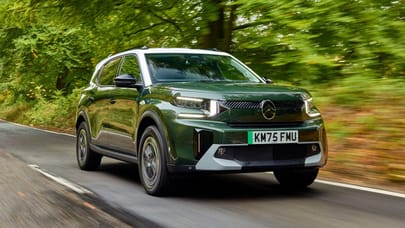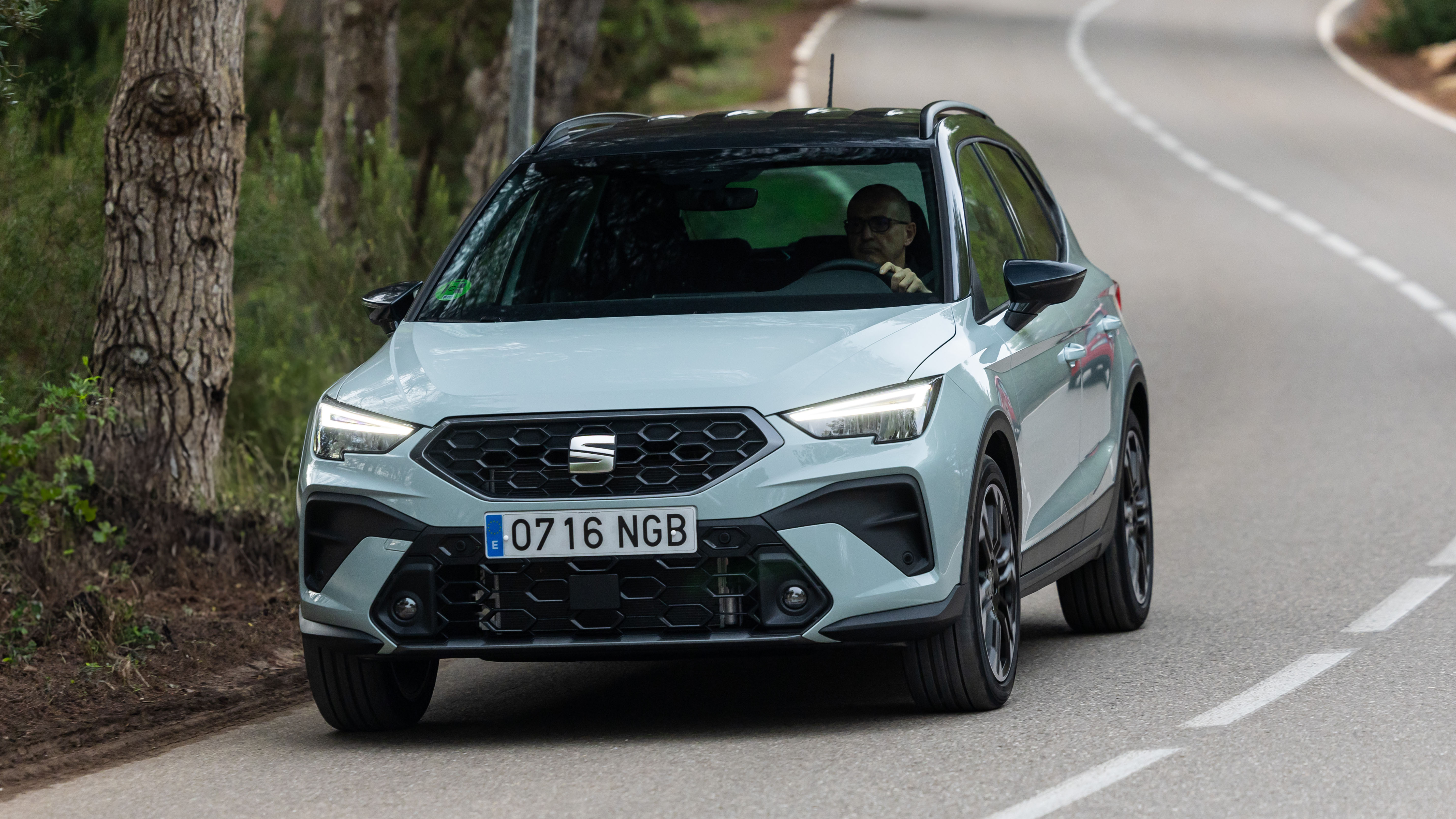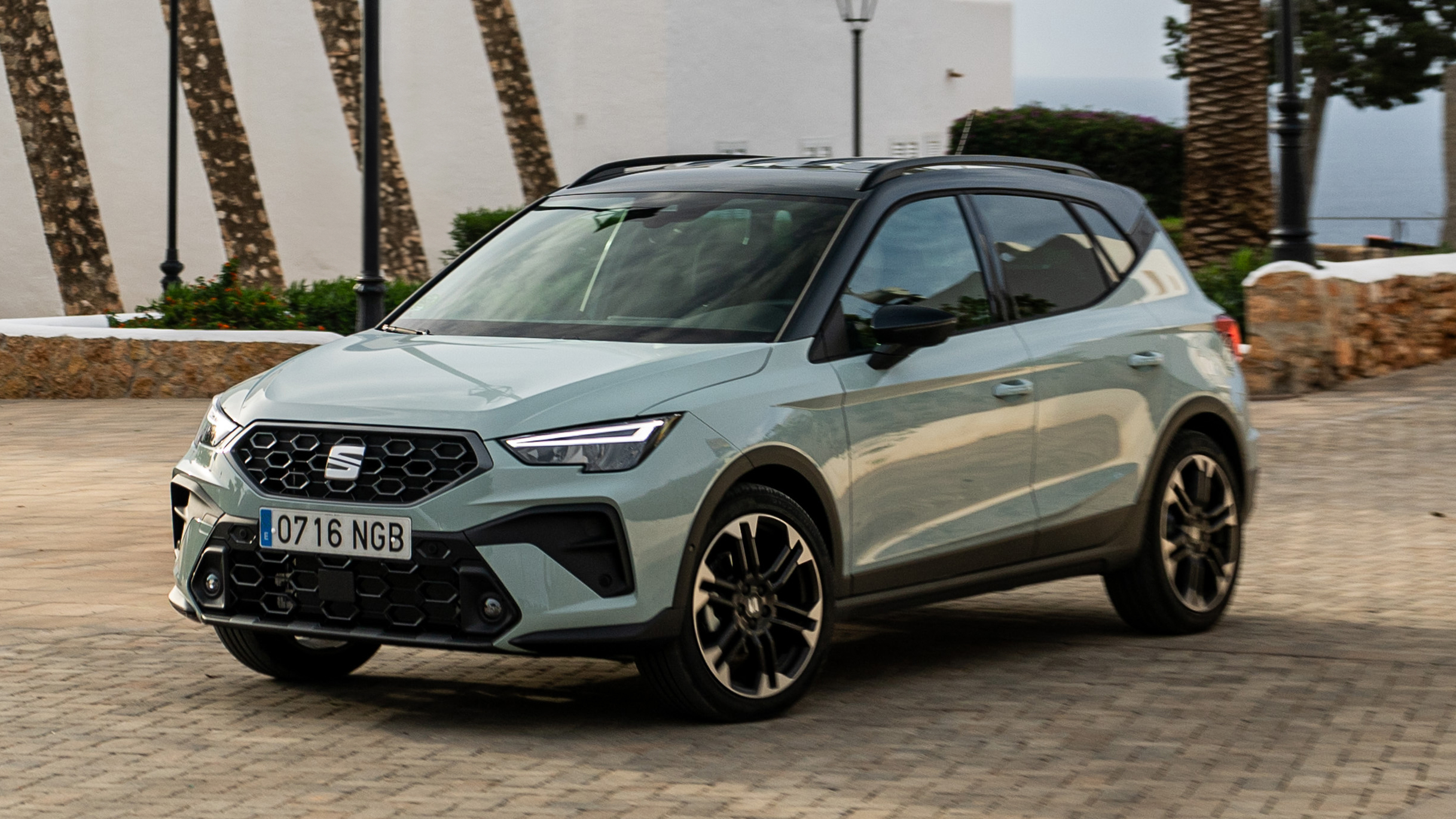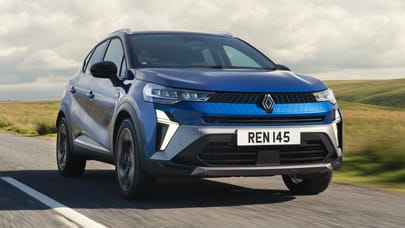
Good stuff
Drives well enough, no surprises, affordable
Bad stuff
Cabin a little drab, no AWD versions, lacks a USP
Overview
What is it?
Seat’s smallest crossover. It arrived in 2017, with a mid-life facelift in 2021, and to date over 750,000 have been sold globally. Now, it’s undergone another light refresh, with small tweaks to the exterior, interior, and trims.
The trend for small crossovers is showing no signs of slowing down either. It can count the Volkswagen T-Cross and Skoda Kamiq as its closest competitors from within the VW Group, while it’s also got the Nissan Juke, Ford Puma, Hyundai Kona, Vauxhall Mokka, Peugeot 2008, Citroen C3 Aircross and Renault Captur among its many, many rivals these days.
But Seat makes no secret that it’s now the entry point to the VW brand, and it’s targeting the Arona at young lifestyle types with a punchy price tag.
So what’s special about the Arona?
It's actually not a very crossover-y crossover, the Arona. It runs on the same wheelbase as the Ibiza, and the cabin is very similar. In fact, it looks remarkably like Seat’s small hatch after an all-inclusive holiday, save for the kicked-up window line at the rear and contrast roof (available in grey or black).
This latest update introduces refreshed bumpers front and rear, a new hexagonal grille design, slimmer full LED headlights (as standard), revised alloy wheel designs, plus a choice of new paint jobs, all to help keep it down with the kids. Or something.
It still uses the crossover version of the VW Group's MQB A0 platform. You sit higher than a supermini, one of the main reasons folk have fallen in love with the crossover, but less so than many rivals. But it is enough extra height to gain cabin and boot space in a smallish and parkable overall size.
What about powertrains?
Engines are standard for the small VW Group range: the 1.0-litre turbo three-cylinder is available in 94bhp and 113bhp tunes (the latter can be optioned with a seven-speed DSG auto gearbox), or you can still have the 148bhp 1.5-litre four-cylinder turbo plus auto gearbox setup that has been dropped from the Ibiza range. There’s still no four-wheel-drive option.
From 2027, a 1.5-litre eTSI mild hybrid setup will be available – just like the new Volkswagen T-Roc will feature when it arrives later this year. As yet there’s no plans to introduce a fully electric variant, simply because it’d be too expensive for its target market, we’re told. And because the Cupra brand exists, presumably.
How does the cabin fare?
The biggest update as part of the latest refresh is a steering wheel wrapped in perforated leather, but otherwise it’s pretty much as you were. Base spec models get an 8.25in infotainment display, otherwise it's 9.2in across the board. Oh, and there’s also now ventilated wireless charging plus a new six-speaker audio system.
Even so, the Arona’s interior is still a little bland. And while there’s plenty of room up front (though you do sit a little lower compared to other crossovers), space is a little limited in the rear. The 400-litre boot capacity is about average for the sector, and represents 50 litres more volume than an Ibiza. Full details on the Interior tab.
How much does it cost?
While Seat hasn’t revealed official prices yet, we’re told that base models will start from just over £22k, rising to just over £28k for the range toppers, with four trims to choose from. Full details over on the Buying tab.
What's the verdict?
The Arona drives pleasingly enough, offers easy to use tech, and it’s as roomy in the cabin and boot as most rivals. It has no glaring faults. But while the facelift improves a couple of aspects it still feels routine, and a little last decade.
Little imagination or effort has been put into making it different to the Ibiza. Not in the visuals nor the practicalities. It lacks a unique selling point. And mini crossovers are a difficult breed as a whole, because none are great to drive and they cost as much as their makers' next-size-up hatchbacks but don't drive as well.
Unless you love the looks or are sold on the (slightly) higher driving position, we'd say get a Leon. It looks smarter, it’s better to drive, it gets a better cabin and offers roughly the same space, and it’s only slightly more expensive. Win-win.









